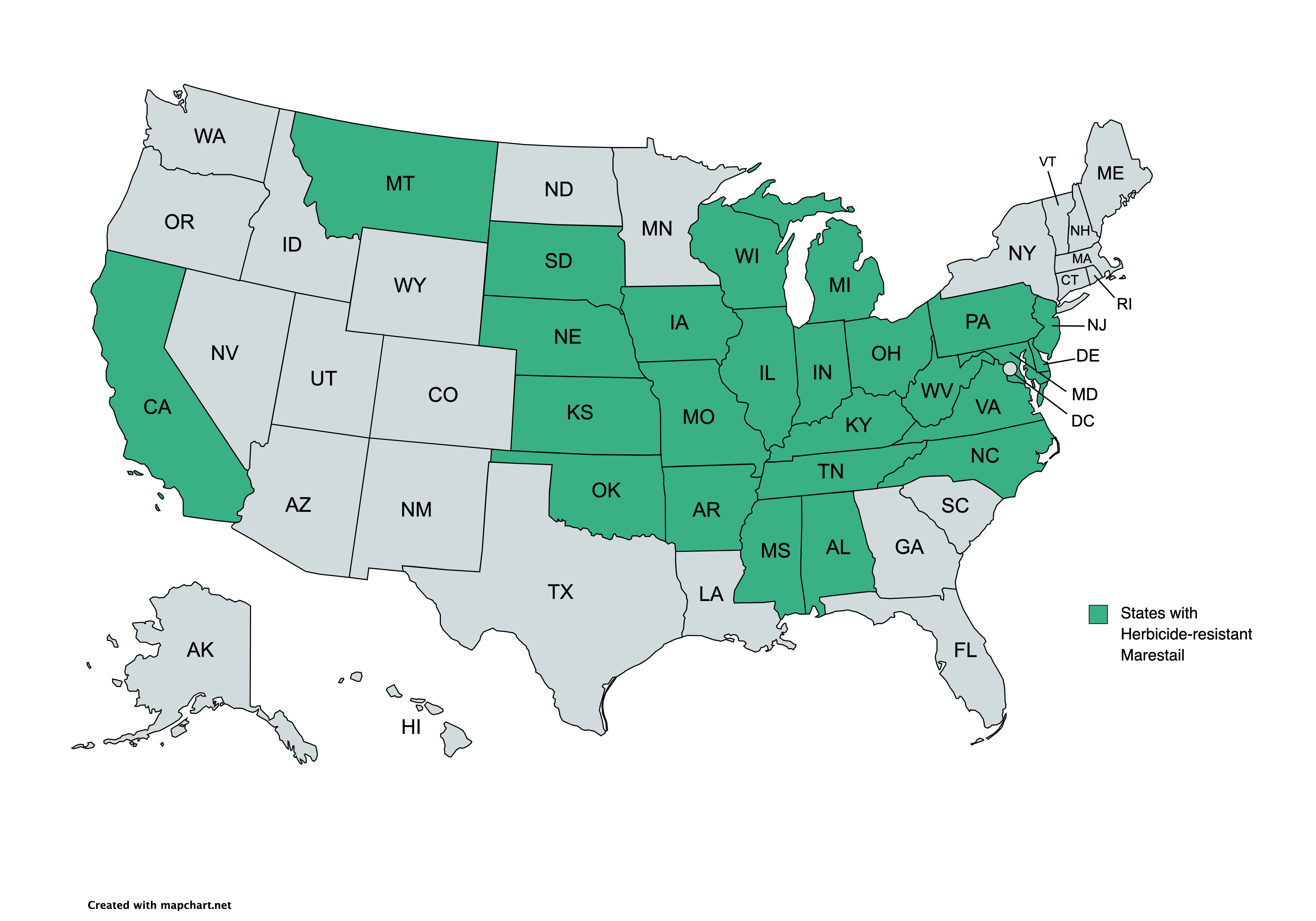Field Facts: Marestail

While most yield-robbing weeds stop growing during the fall months, this is when marestail is just getting started. In fact, it’s estimated that 75% of all marestail seedlings germinate in the fall.1 Plants that emerge in the fall can survive the winter and continue growing as the row crop emerges the following spring.

1Jha, P., and R. Yadav. 2021. 2020 Summary of Herbicide Evaluations for Marestail (Horseweed) Control in Soybean. https://crops.extension.iastate.edu/cropnews/2021/02/2020-summary-herbicide-evaluations-marestail-horseweed-control-soybean
2Werle, R., C. Proctor, and J. Miller. 2016.Fall is Optimal for Marestail Management. https://cropwatch.unl.edu/2016/fall-optimal-marestail-management
The transgenic soybean event in Enlist E3® soybeans is jointly developed and owned by Corteva Agriscience LLC and M.S. Technologies L.L.C. Enlist Duo® and Enlist One® herbicides are not registered for sale or use in all states or counties. Contact your state pesticide regulatory agency to determine if a product is registered for sale or use in your area. Enlist Duo and Enlist One herbicides are the only 2,4-D products authorized for use with Enlist® crops. Consult Enlist herbicide labels for weed species controlled. Elevore®, EverpreX®, Resicore®, Sonic® and SureStart® II are not registered for sale or use in all states. Resicore and SureStart II are not available for sale, distribution or use in Nassau and Suffolk counties in the state of New York. Contact your state pesticide regulatory agency to determine if a product is registered for sale or use in your state. Always read and follow label directions.